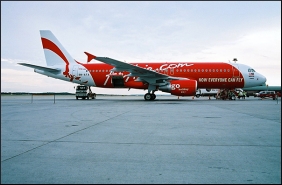|

|
AirAsia plane crash caused by faulty component, crew action
|
|

|
|
| Top Stories |
 |
|
|
|
IANS | 01 Dec, 2015
A faulty component and the way the pilots responded to a technical malfunction caused AirAsia Flight QZ8501 to plunge into the Java Sea in December 2014, killing all 162 people on board, Indonesian officials said on Tuesday.
The ill-fated plane was en route to Singapore from the Indonesian city of Surabaya on December 28, 2014, when it crashed into the Java Sea, CNN reported.
The plane's flight control computer had a cracked solder joint that kept malfunctioning, Indonesia's National Transport Safety Committee (NTSC) said in a report.
Aircraft maintenance records found it had malfunctioned 23 times in the year before the crash, and the interval of those became shorter in the three months prior to the crash.
"Subsequent flight crew action resulted in inability to control the aircraft causing the aircraft to depart from the normal flight envelope and enter a prolonged stall condition that was beyond the capability of the flight crew to recover," the report said.
The investigation, a joint effort involving Australian, French, Singaporean and Malaysian authorities, points to weaknesses in pilot training, which heavily emphasises on take off and landing, an aviation expert said.
Preliminary findings from the NTSC earlier this year said roughly 35 minutes into the two hour flight, the pilot asked air traffic control for permission to climb to avoid stormy weather.
The plane went from cruising at 32,000 feet, ascending steeply to 37,400 in about 30 seconds -- something commercial planes are not designed to do. It may have been climbing at a rate twice as fast as it could and should.
Minutes later, the plane disappeared from radar.
Although the area was experiencing turbulent weather patterns, seven other planes flying nearby landed safely.
Malaysia-based AirAsia did not have the clearance to fly the route on that particular day.
|
|
|
| |
|
|
|
|
|
|
|
|
|
|
|
|
|
|
| |
| Customs Exchange Rates |
| Currency |
Import |
Export |
US Dollar
|
66.20
|
64.50 |
UK Pound
|
87.50
|
84.65 |
Euro
|
78.25
|
75.65 |
| Japanese
Yen |
58.85 |
56.85 |
| As on 13 Aug, 2022 |
|
|
| Daily Poll |
 |
 |
| PM Modi's recent US visit to redefine India-US bilateral relations |
|
|
|
|
|
| Commented Stories |
 |
|
|
|
|
|
| |
|